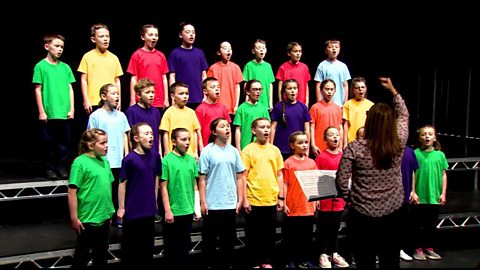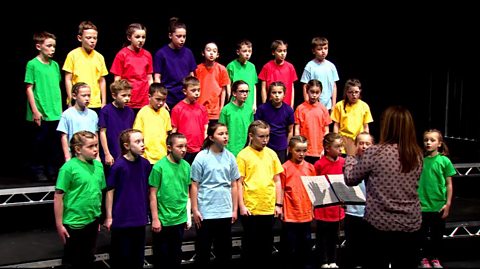
For the audience to hear and understand the story, you need to sing the words of your song clearly. This is called diction and it is just as important as singing the melody in tune.
When singing in a choir with many voices, you need to place the beginning and end of words in the right place so that you sound like one voice.
If consonants are not sung at the same time the words can sound messy and the audience may miss important words.
In the video, our choir don't pronounce their consonants properly. Listen to how the Іх’s and іЩ’s sound - they’re very sharp on the ear. These sounds are difficult for the audience to understand so it takes away from the emotion in the song.
The choir sing the same phrase a second time but with correct diction. Watch how carefully they pronounce the words and how their eyes are glued to the conductor.

Tongue Twisters
In the next video, our choir are saying a tongue twister to help improve their diction. They start slowly but speed up each time, making it harder and harder.
This shows how careful you need to be when pronouncing your lyrics so they don’t get lost.
Singing the lyrics is even harder than saying them. In this video they sing a tongue twister in a downwards scale, remembering to think about the notes they’re singing as well as having clear diction.
Keeping your mouth and chin nice and loose will help with singing vowels. Let the tip of your tongue make the consonant sounds.
One last tip is to make sure you breathe deeply. If your breath is energised, it will bounce off the consonants and bring them alive. This will help the words to travel in a large room.
Try these tongue twisters yourself, can you sing them really fast while still having clear diction?
She sells sea shells on the sea shore,
But the shells that she sells are not sea shells.
Peter Piper picked a peck of pickled peppers.
Red lorry, yellow lorry.

More on Music
Find out more by working through a topic
- count7 of 20

- count8 of 20

- count9 of 20

- count10 of 20
